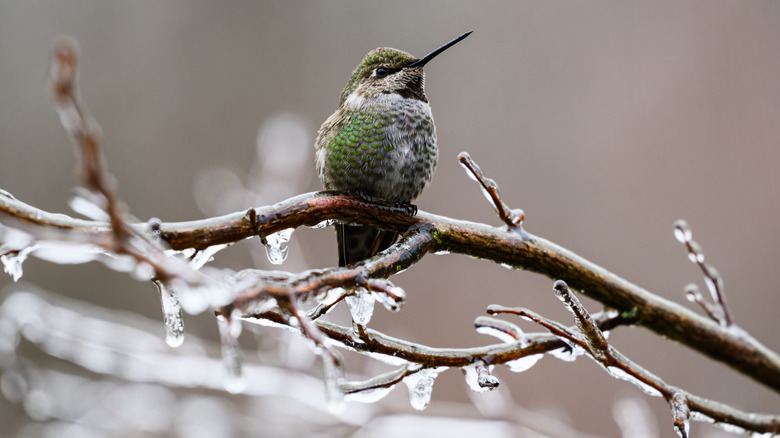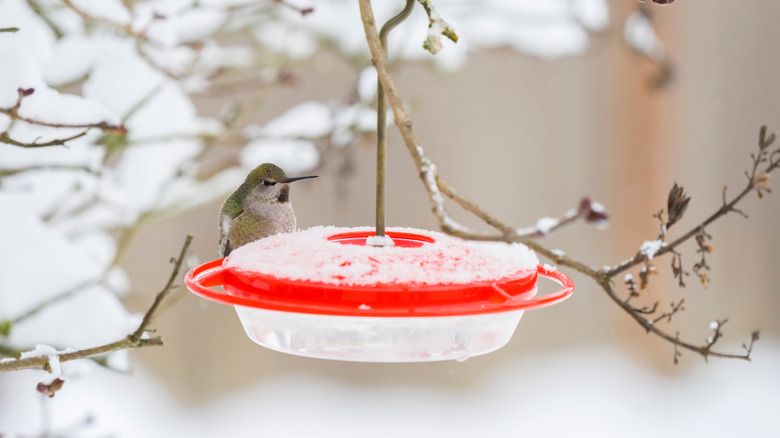Keep Hummingbirds Coming Back As The Weather Cools With One Smart Tip
We may receive a commission on purchases made from links.
With a threat of the first frost looming, you might be worried that the nectar in your hummingbird feeder will freeze. Whether it's a homemade hummingbird feeder or store-bought one, neither one is likely well equipped for frigid weather. If you want hummingbirds in your yard this winter, keep that feeder warm and ready.
You might be thinking: Shouldn't I take hummingbird feeders down when it gets cold? In some areas, possibly, but not all. Migrating hummingbirds might pass through the Midwest in October. In other areas of the country, hummingbirds may stay all year round — like in mild winter gulf states such as Texas or Louisiana. Even in Pacific Northwest states, such as Washington or Oregon, you might even see hummingbirds coming to the feeders through the winter. The Anna's hummingbird, known by the male's distinctive reddish-pink cowl, sticks around all winter near Seattle. In southern border states, the buff-bellied hummingbird might be more common. You'll known the males by their greenish-blue heads and red beaks.
But even southern states in winter can become cold enough to freeze nectar. The typical hummingbird nectar tends to freeze when temperatures dip below 30 degrees. So, you might have to take action to protect your feeder. The last thing you want is for it to get so cold that a hummingbird gets caught on it ... like the kid who sticks his tongue to a frozen flagpole in "A Christmas Story."
How to keep your feeder warm in colder weather
Even if hummingbirds don't get caught on the feeder, they can't drink frozen nectar. Their tongues might be able to stretch out double the length of their bill, but that won't do them much good if the nectar they're trying to drink is one big popsicle. Also, frozen nectar could expand and crack or break glass feeders. When it comes to keeping a hummingbird feeder warm, you've got a few options.
Bring the feeder inside after sunset when temperatures tend to drop to their coldest and bring it back out in the morning. This won't upset the hummingbird's feeding schedule, since they typically don't eat at night. You can also use two feeders. Keep one inside, and another handy to swap out when it's so cold that ice forms in the feeder. Test out other creative solutions as well. You could string warm incandescent (not cool LED) lights around it to make sure it doesn't freeze. There are also special products you can buy, like the Kiskisby hummingbird feeder heater.
Accessible feeders aren't the only thing hummingbirds need. In winter, birds still need fresh water as well, so you could offer a pan of warmed water or a heated bird bath. And don't forget the right height to hang your feeder so hummingbirds feel safe from predators like house cats.

